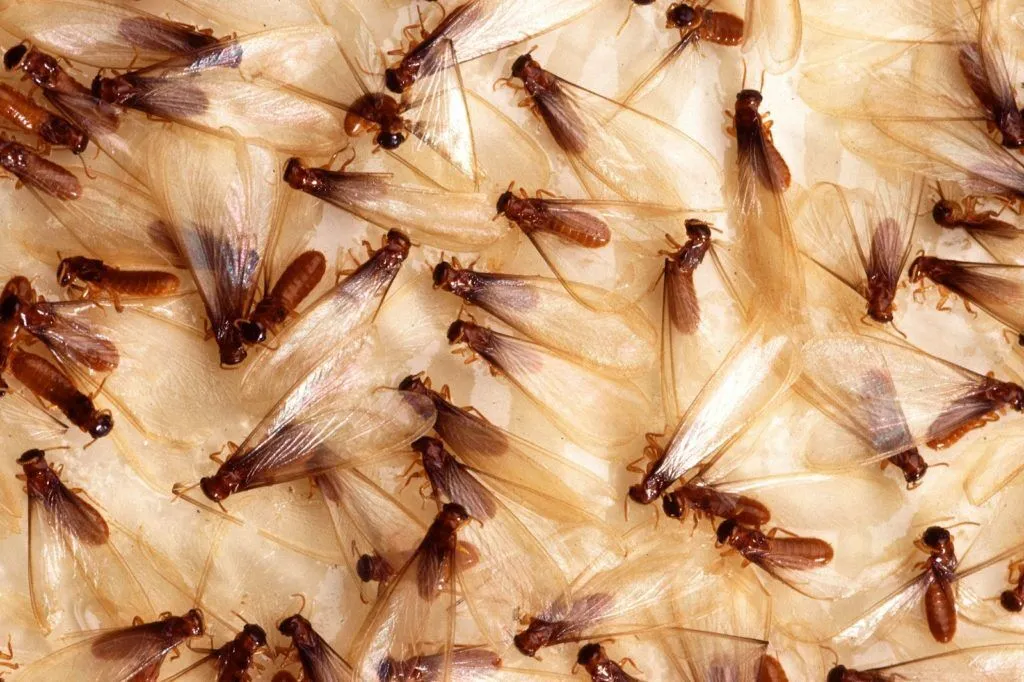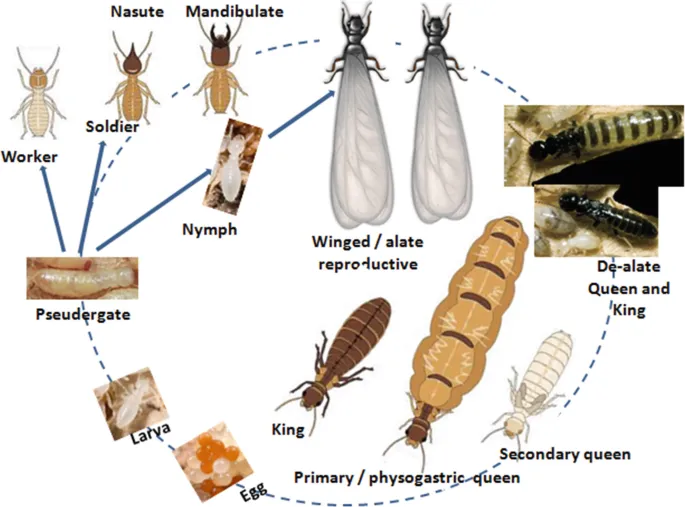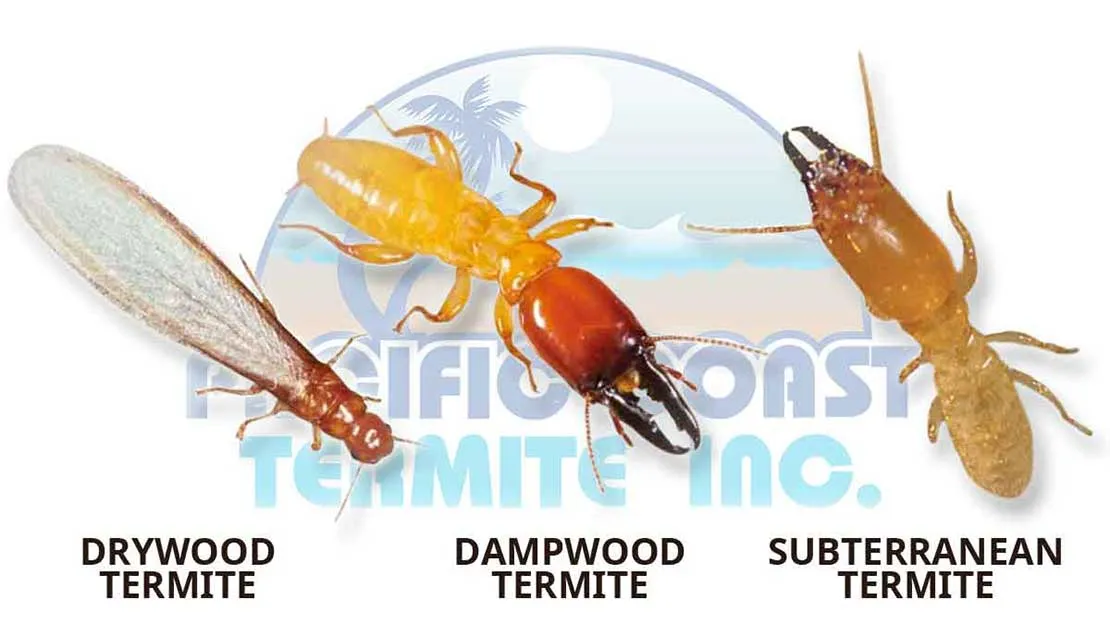No products in the cart.
Blog
What Do Termites Look Like?
Termites are small, soft-bodied insects that are often mistaken for ants due to their similar size and appearance, but they have distinct physical characteristics. These insects can be difficult to detect because they often live hidden in wood, soil, or structures. There are several different types of termites, such as subterranean, drywood, and dampwood termites, but their overall appearance is generally similar, with some variation depending on their role within the colony (e.g., workers, soldiers, and reproductive termites).
Here’s a detailed look at what termites look like, focusing on their key features, castes, and life stages.

1. General Features of Termites
- Size: Termites are small insects, ranging in size from 1/8 to 1 inch long, depending on their species and caste. Workers are usually smaller than soldiers and reproductive termites.
- Color: Their color can vary from white to light brown or even dark brown. Workers are typically pale or creamy-white, while soldiers can have darker, more defined features. Reproductive termites, also known as alates (winged termites), are darker in color—ranging from brown to black—since they need stronger pigmentation to survive outside the colony when they swarm.
2. Termite Body Structure
Termites, like other insects, have three main body sections: the head, thorax, and abdomen. However, they have some distinct features that differentiate them from ants and other insects:
- Head: The termite head is relatively large and oval-shaped, with small, straight antennae. Unlike ants, whose antennae are bent or “elbowed,” termite antennae are straight and bead-like. The head of the soldier caste has more developed mandibles (jaws) for defense purposes.
- Thorax: The middle section of the body, the thorax, supports the termite’s six legs. Each pair of legs is attached to one of the three thoracic segments. Unlike ants, termites do not have a pinched waist between their thorax and abdomen; instead, their bodies are more cylindrical.
- Abdomen: Termites have a long, elongated abdomen with little distinction between the thorax and abdomen, giving them a more tube-like appearance. This is another key difference from ants, which have a noticeable “waist” between the thorax and abdomen.
3. Termite Castes: Workers, Soldiers, and Reproductive Termites
Termite colonies are divided into castes, each having distinct physical characteristics depending on their role within the colony. There are three main castes: workers, soldiers, and reproductive termites (alates).

a. Workers
- Appearance: Workers are the most numerous in a termite colony and are responsible for foraging, feeding the colony, and building tunnels. They are small, soft-bodied, and pale in color, usually white to creamy.
- Size: Workers are typically about 1/8 to 1/4 inch long, depending on the species.
- Features: Workers have no wings and no visible large jaws. Their bodies are less specialized compared to soldiers and reproductive termites.
b. Soldiers
- Appearance: Soldier termites are responsible for defending the colony from predators, particularly ants. They are larger and have more distinct features than workers.
- Size: Soldiers are usually 1/4 inch to 1/2 inch long.
- Features: Soldiers are characterized by their large, strong mandibles (jaws) that they use for defense. Their heads are often darker and more heavily armored than their bodies. In some species, soldiers may have elongated heads, which helps distinguish them from workers.
- Color: Soldiers are typically darker than workers, with brown heads and lighter-colored bodies.
c. Reproductive Termites (Alates or Swarmers)
- Appearance: Reproductive termites, also known as alates, are the winged members of the colony. They are responsible for mating and starting new colonies. When conditions are right (often during spring or summer), these winged termites leave the nest in swarms to reproduce and establish new colonies.
- Size: Alates are generally larger than workers and soldiers, usually between 1/2 inch to 1 inch in length, including their wings.
- Features: Alates have two pairs of long, equal-sized wings that are longer than their bodies. The wings are translucent and often have a milky or smoky appearance with fine veins. Unlike ants, which have unequal wing sizes (one pair is larger than the other), termite wings are symmetrical. After swarming, they shed their wings.
- Color: Alates are darker than other castes, typically brown or black, since they need to survive outside the colony during swarming.
d. King and Queen Termites
- Appearance: The king and queen termites are the reproductive leaders of the colony. The queen, in particular, can be much larger than any other termite in the colony, sometimes reaching several inches in length due to her swollen abdomen.
- Features: The queen has a large, distended abdomen filled with eggs. The king is smaller than the queen but still larger than typical workers or soldiers. Both have relatively darker, harder exoskeletons.
4. Different Species of Termites
There are several termite species, and while they share similar features, there are slight variations in appearance between them.
- Subterranean Termites: These are among the most destructive species and live underground in large colonies. Workers and soldiers are pale and small, while reproductive termites are darker and larger. Subterranean termite alates are commonly dark brown or black, about 1/2 inch long with wings.
- Drywood Termites: These termites live inside dry wood and do not require contact with soil. They are usually lighter in color, with cream to light brown bodies. Drywood termite alates tend to be light brown or tan, with wings that are slightly translucent.
- Dampwood Termites: These termites prefer moist wood and are generally larger than other species. They have larger heads, and their bodies can range from light brown to dark brown depending on their caste.

Conclusion
In summary, termites are small insects that can be difficult to spot due to their hidden habitats and pale coloring. Workers are soft-bodied, pale, and lack wings, while soldiers have large, strong mandibles for defense. Reproductive termites are darker and possess wings during the swarming phase, allowing them to leave the colony and start new ones. Recognizing these key differences in body structure, size, and color can help identify termites before they cause significant damage to wooden structures.
